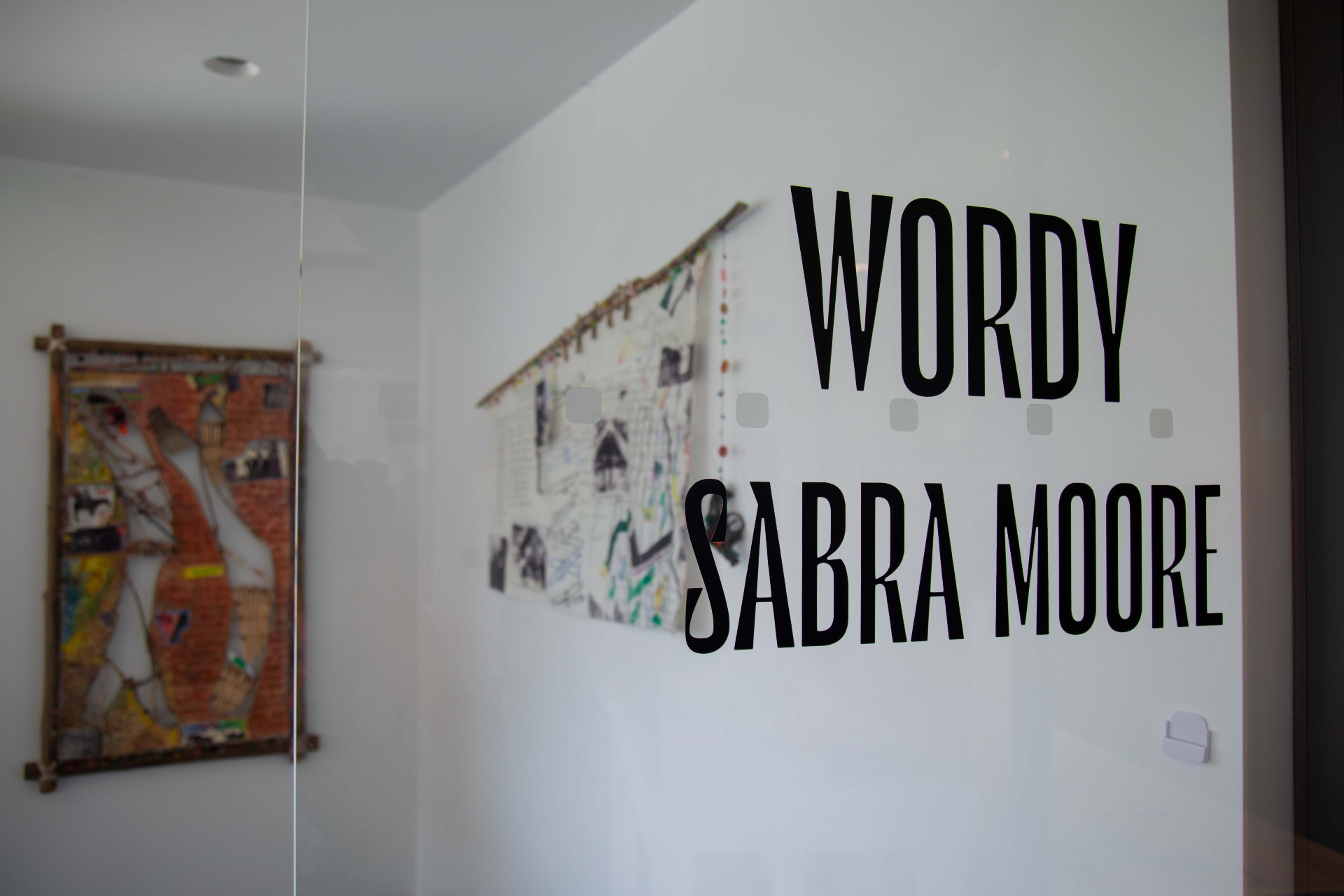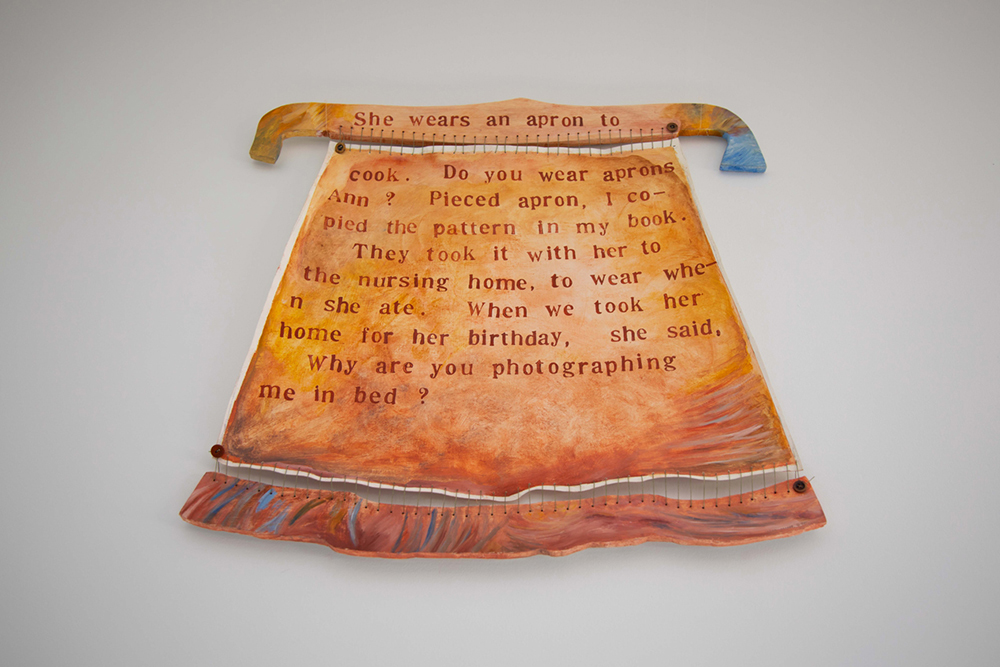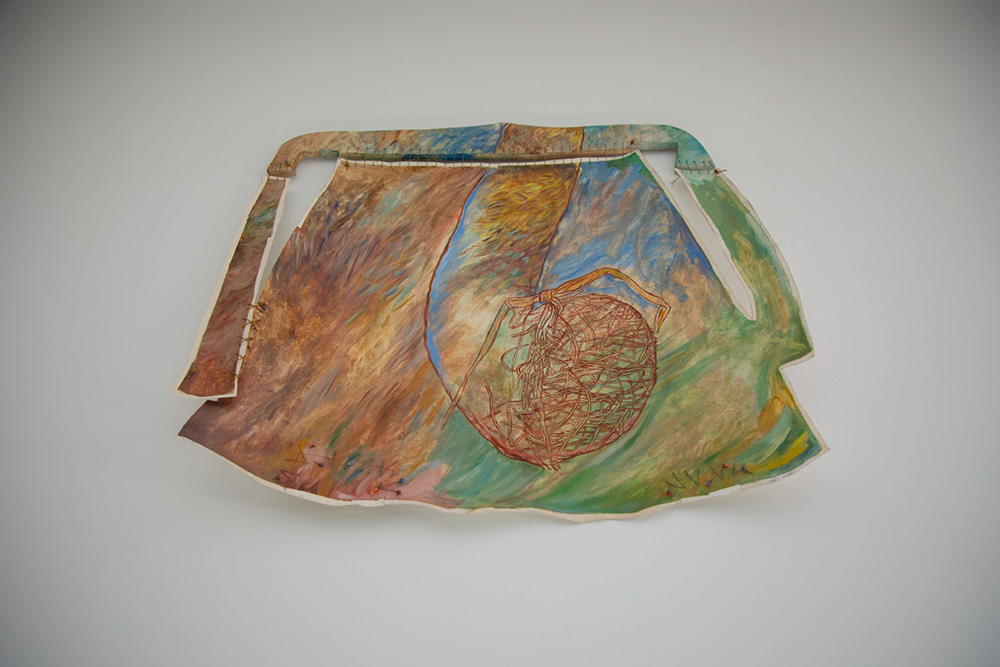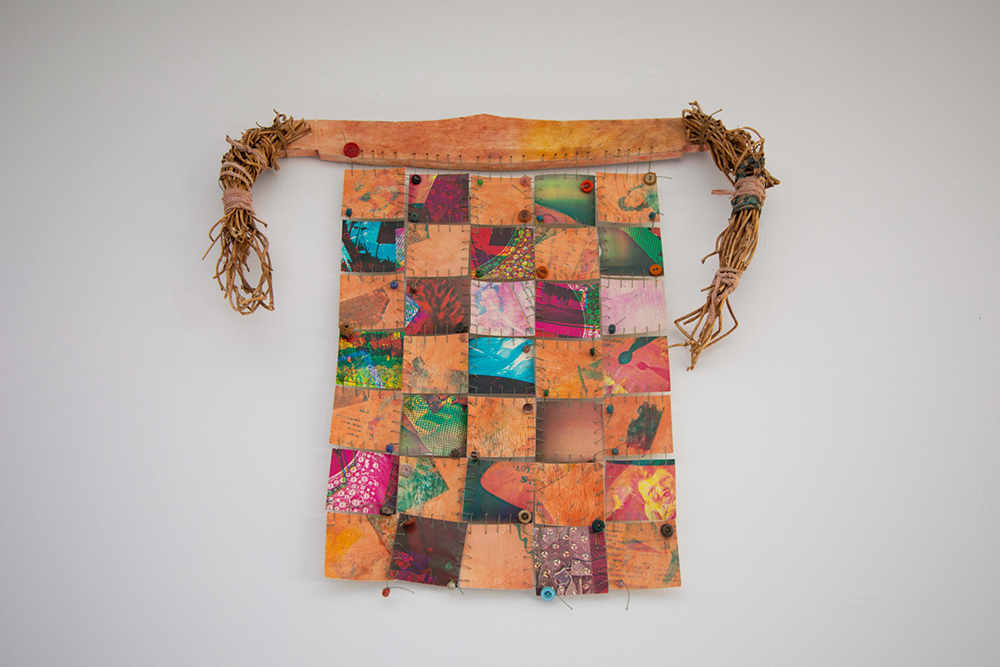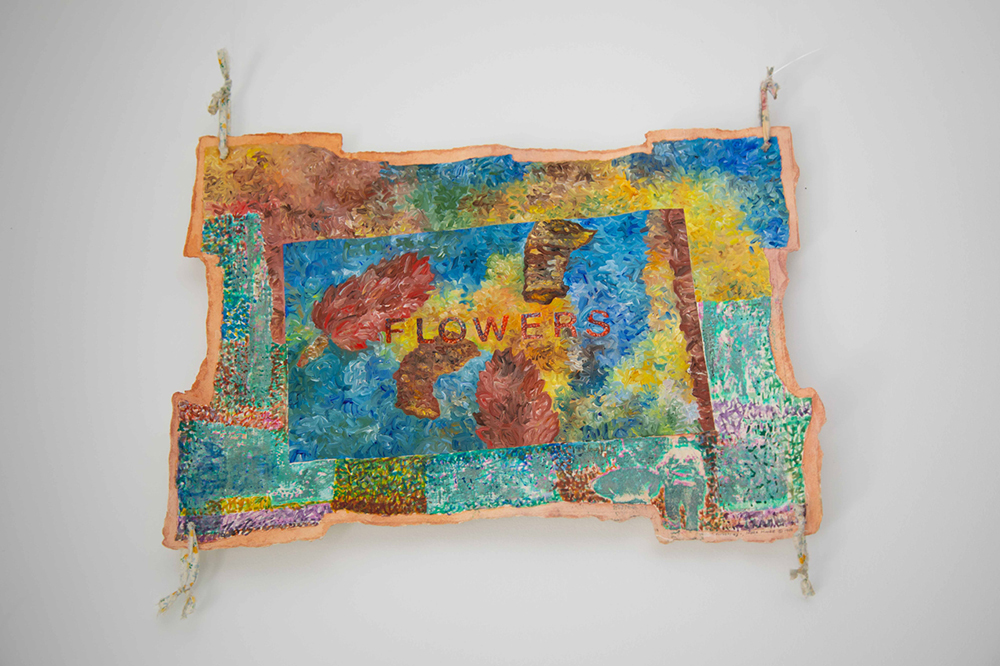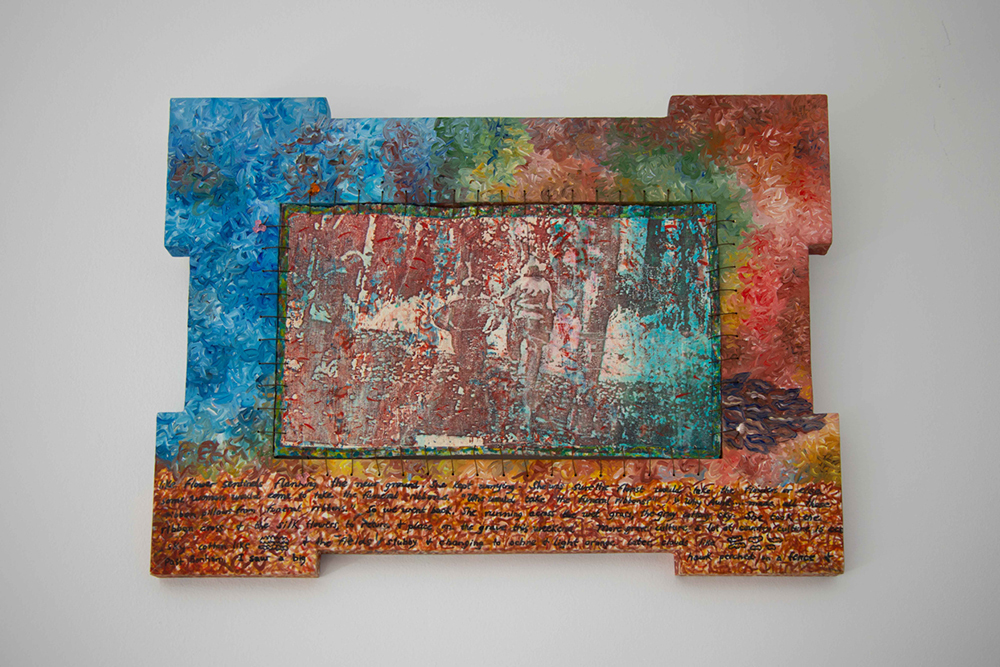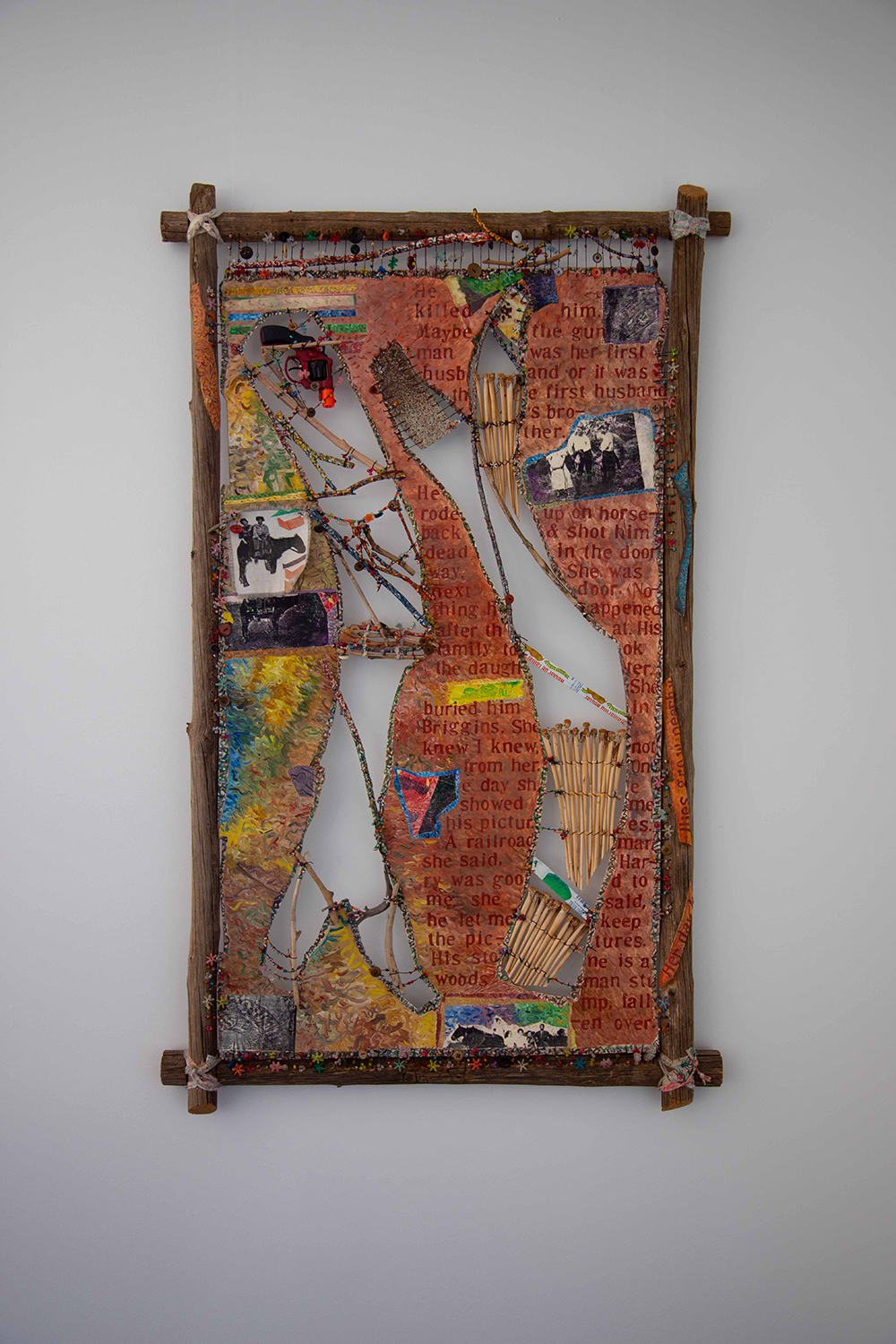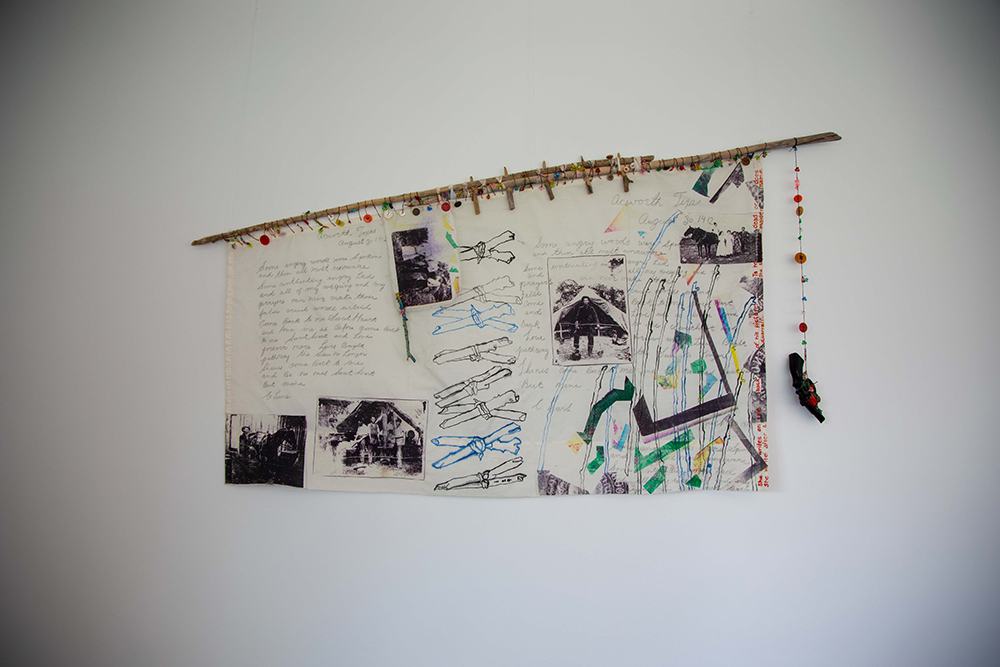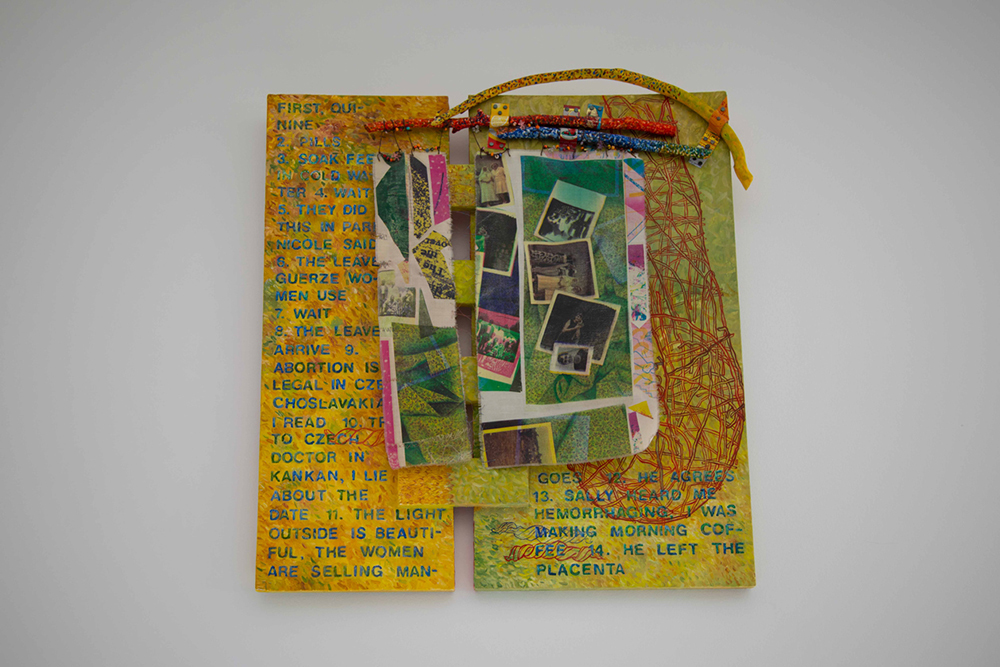Art and activism have long intersected at Barnard — as far back as the early 1900s, when Zora Neale Hurston, Class of 1928, was a student writing about race and Blackness. So it’s no surprise that activist and artist Sabra Moore chose Barnard Archives and Special Collections to house her project “WORDY: Sabra Moore,” an exhibition of 15 mixed-media artworks and 12 photocopier artist books created from 1982 to 2018 that center text, puns, and wordplay. The exhibition will be on display in the Milstein Center’s Hope L. and John L. Furth Archives Reading Room until August 16.
“I grew up in a family of quilt makers,” Moore said. “This experience of combining materials, saving and reusing objects and ideas, working in concert with others, remains a dominant ethos for my art and life.”
The current exhibition is not the first time Moore has shared her work with the College — in 2016, she donated her NYC Women’s Art Movement Collection, one of the most requested collections from the Archives, which documents her work as a New York City organizer, activist, and curator from the 1970s to the 1990s. “I wanted my archives from the NYC Women’s Art Movement to be housed in a place that resonates with the activism of what we were doing and what we all need to keep doing — preserving our stories, documenting our history, finding the appropriate formats to express feminist content and the multiplicity of concepts,” said Moore. “Students, historians, scholars, and curators have been using my archive to do research. This is what I had hoped would happen by placing the archive at an institution which values women’s studies.”
A globally exhibited artist who has been painting and critiquing culture on materials like paper, metal, and wood since the 1960s, Moore — who is originally from Texas and now lives in New Mexico — spent three decades in NYC advocating for women’s rights as a counselor at the first legal abortion clinic in New York, as a member of the Heresies Collective, and as president of the Women’s Caucus for Art. Moore writes about this time in her life in the 2016 book Openings: A Memoir from the Women’s Art Movement, New York City 1970-1992.
“We are so pleased to have ‘WORDY: Sabra Moore’ in the Barnard Archives. Sabra’s collection in the archives is a beautiful and poignant snapshot of feminist artists and organizing in New York City from the 1970s to the 1990s,” said Martha Tenney, director of Barnard Archives and Special Collections. “I see this spirit of documentation continued through Sabra’s artwork and artist books, in which she engages with her own family’s histories and ways of making. But whereas the collection is a collective portrait, Sabra’s artworks are personal, special, and exquisitely crafted.”
Below, Moore shares select pieces from the exhibit and describes the inspiration them:
“These four apron/artworks were part of a 1985 window installation at Windows on White, 55 White Street, New York City. My grandmother Gladys was suffering from intermittent bouts of dementia. When we took a picture of her lying in her bed, the setting seemed inappropriate to her and she asked, ‘Why are you photographing me in bed?’ [This was] the repeated mantra I used with these painted aprons. At first, this photo [which appears in apron #3, above] felt sad to me, but later her arm gestures and draped bed coverings reminded me of the Pietà. Gladys was a country woman and an accomplished quilt maker. In the winter, she would lower her quilting frame from the ceiling to work on her quilts, so her bedroom was also her studio and workroom.”
“I made these three artworks in response to the deaths of my grandparents, a year apart from each other, after sharing 67 years of life together. One year, my spouse, Roger Mignon, had photographed them walking into Briggins Cemetery, our community cemetery in the woods near Acworth, Texas. I loved their body gestures: my grandmother Gladys, striding past the gate with her arms on her hips; my grandfather Chester, slightly stooped and wearing his hat. I envisioned them becoming soil and nurturing plants as they had on the farm. Flowers flower.”
Woodsman (Place/Displace series). 1992. Oil on gessoed paper with laser transfer, beads, plastic gun, juniper wood frame. 52 in. x 32 in.
“The text relates to the murder of my [other] grandmother’s second husband by her first husband, circa 1912, and my discovery of his tombstone shaped like a log in the country cemetery near Acworth. Woodsman is a fraternal order, and I took it as the title for both artworks [see below]. I exhibited both of these works in my 1997 installation Place/Displace, Santuario de Guadalupe art space in Santa Fe. This was a show in which I made artwork about the members of my family buried in a country cemetery in the woods near Acworth. When I was researching for this show, I discovered the murdered man’s tombstone and later found the photos that Grandmother had saved.”
Woodsman (Place/Displace series). 192. Laser transfer print on cloth, watercolor, beads, wood, plastic gun. 35 in. x 52 in.
“The text is a facsimile of my grandmother’s writing on the back of a photo of the murdered man. I felt the writing was like a talisman to bring him back. I never knew this man and pieced his story in fragments. Grandmother Caroline didn’t speak of him, but she was marked by this violence. The one time she showed me one of his photos, she said, ‘Harry was a good man. He let me keep the photos.’ I sewed toy guns into both of these artworks [both of the Woodsman pieces], like a wound that had healed but left a scar.
“Place/Displace was a way for me to explore the lives of people from both sides of my family — the ones who left the country and the ones who stayed. Caroline’s father was a carpetbagger who fought for the Union [army] and then settled in Acworth. He placed his Ohio Union Infantry Regiment on this tombstone. The artwork I made for him is titled Not a Civilian. He was the uncle of the labor leader John L. Lewis.’”
First Quinine. 1992. Oil on gessoed wood, laser transfer on cloth, beads, sticks. 25½ in. x 23½ in.
"This piece explores my abortion in 1964 and the steps I took with women friends to address my unwanted and unintended pregnancy. There are 13 lines for the 13 weeks before I obtained an abortion. I made two artworks about this, the first in the format of a full-size wardrobe with two doors that open to my story and the story of my aunt Opal. I made both of these works almost 30 years after the events, as a way to look back on my younger self and help resolve the complicated feelings from that time in my life. I am dismayed that we women are being faced again with limits on our reproductive rights.”
Palm Trees With Capitals. 2000. Six “trees,” each laser transfer print on cloth, “capitals” vary: wood, metal. 76 in. x 11 in. each.
“I invited 82 friends to send me a photocopy of their palm print. Then I wood-engraved each person’s palm print onto six 7-foot vigas, thus ‘palm trees.’ I also made ‘Palm Trees With Capitals,’ pictured here. This explored the idea of cloth versions of the architectural support of capitals. I am supported by the strength of my friends and colleagues.”
“WORDY: Sabra Moore” is presented by Barnard Archives and Special Collections and is available for in-person viewing through August 16 on Fridays and by appointment (all visitors not affiliated with Barnard/Columbia must email archives@barnard.edu to arrange an appointment).
—TARA TERRANOVA ’25 & ZUYU SHEN ’24
